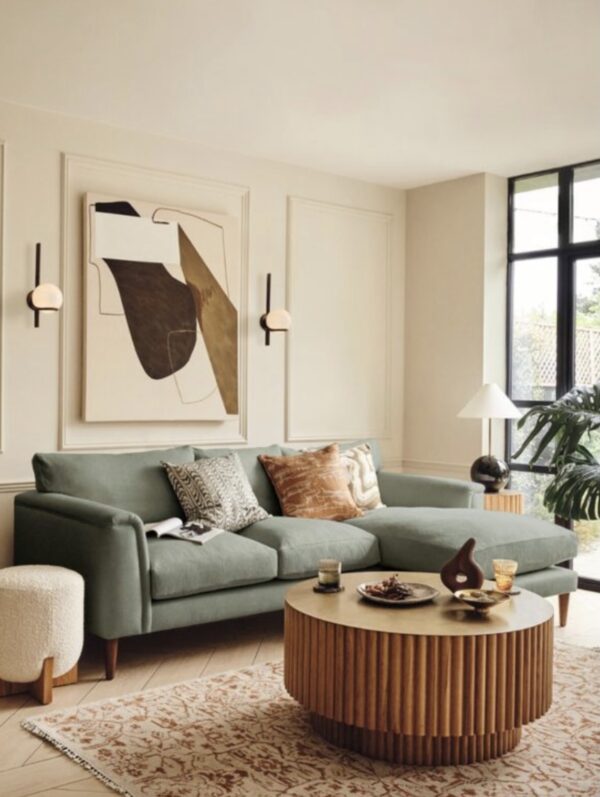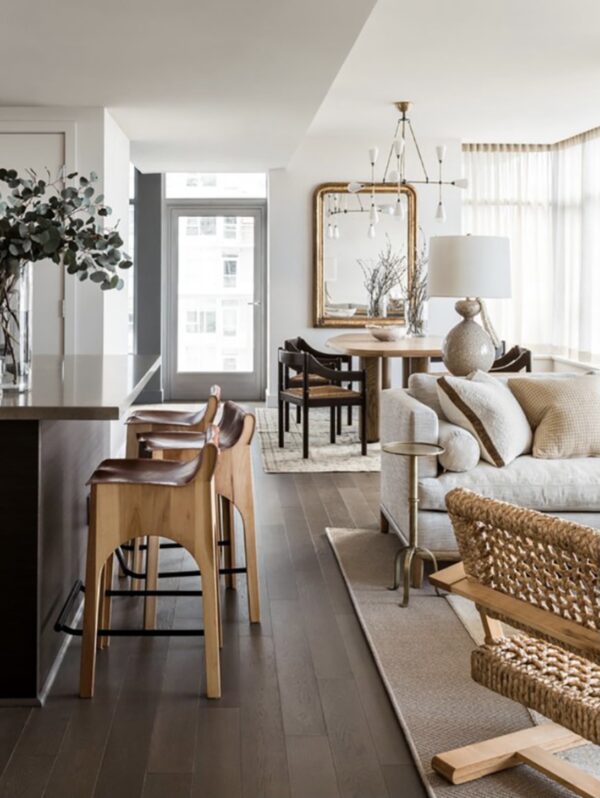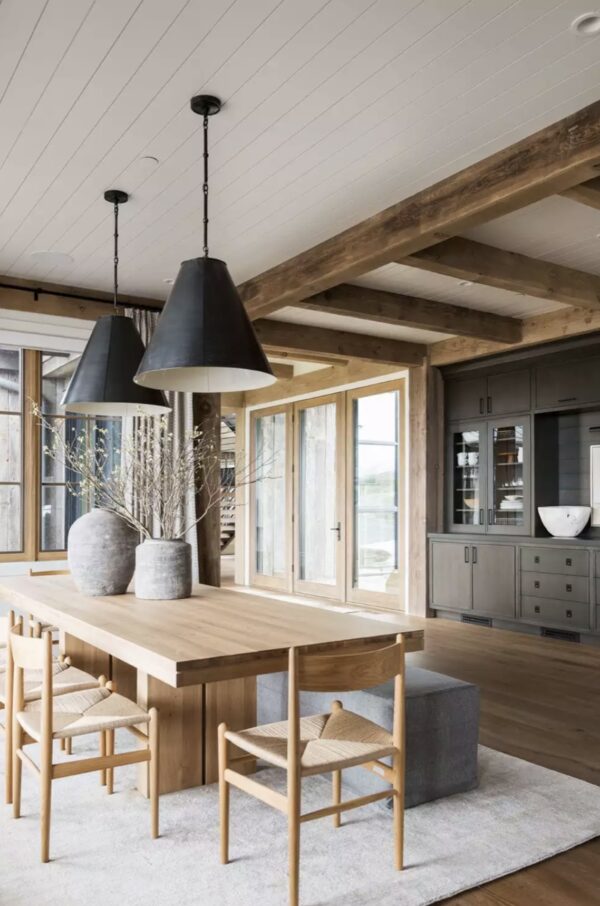
Mixing textures and the old with the new are big trends for 2023. Lots of us are turning to pre-loved shopping to hunt down unique pieces – and whilst you may love the aesthetic of a vintage furniture find, it can be difficult to determine how to incorporate it into your existing scheme. This timber flooring malaysia can be an excellent way to tie together diverse styles, offering a timeless and cohesive backdrop for both modern and vintage elements. Additionally, its natural warmth and durability make it a practical choice for various interior designs.
Along with the second-hand shopping movement, the popularity of mixing and matching wood finishes in interior design continues to rise. Mixing different types of wood can add depth and texture to a space, but if not done correctly, it can also create a mismatched and chaotic look.
To help homeowners and designers create a cohesive and visually appealing space, Head of Design at Luxury Flooring & Furnishings, Carolina Hansson has shared her top tips on how to match different shades of wood.
1. Consider the undertones
Carolina suggests: “When selecting a piece of wood finished furniture; whether that’s a mahogany sideboard or solid wood flooring, you should pay attention to the undertones of each wood. Some wood shades have warm, orange or red undertones, while others have cooler or neutral undertones. For a really cohesive scheme, you should match your pieces with a hardwood flooring that has similar undertones to create a harmonious look.”

2. Start with a neutral base
Carolina says: “If you really like the aesthetic of mixing different shades of wood and varying textures, you should begin by selecting a neutral wood tone, such as oak or walnut, to serve as a foundation for the room. This should pair well with warm or cool tones and will help tie together any other woods that are used in the space.”
3. Limit your wood finishes
Carolina advises: “Unless you’re decorating an alpine cabin, not everything in your scheme needs to centre around wood! I’d suggest choosing no more than three different wood finishes for your space. This will ensure that the varying tones do not overwhelm the room and create a cluttered look.”
4. Vary the textures:
Carolina adds: “While I’d advise limiting the number of different colours of wood used, you can still add variety and interest to the space by incorporating different wood textures. For instance, pairing a smooth wood finish with a rough, reclaimed wood accent piece can create a really interesting focal point and offer lots of dimension to the space.”

5. Use contrasting elements:
Carolina says: “To create even more impact, combine your various wood finishes with contrasting textures like wool or silk in light and bright shades – which will really emphasise the tones and grains in the wood.”
For a dynamic and interesting space, pair wood tones with their opposite, contrasting elements. For example, pair a light oak solid wood floor with a dark metal accent piece, or a dark wood finished engineered wood floor or laminate flooring with a light-coloured rug.
Carolina concludes “Mixing different wood finishes in a space can be a great way to add warmth and character to a room, but it’s important to approach it with a thoughtful and intentional design strategy. By considering undertones, textures, and contrasting elements, you can create a space that feels cohesive and visually appealing.”
For more interior design tips and inspiration, visit Luxury Flooring & Furnishings’ blog.
